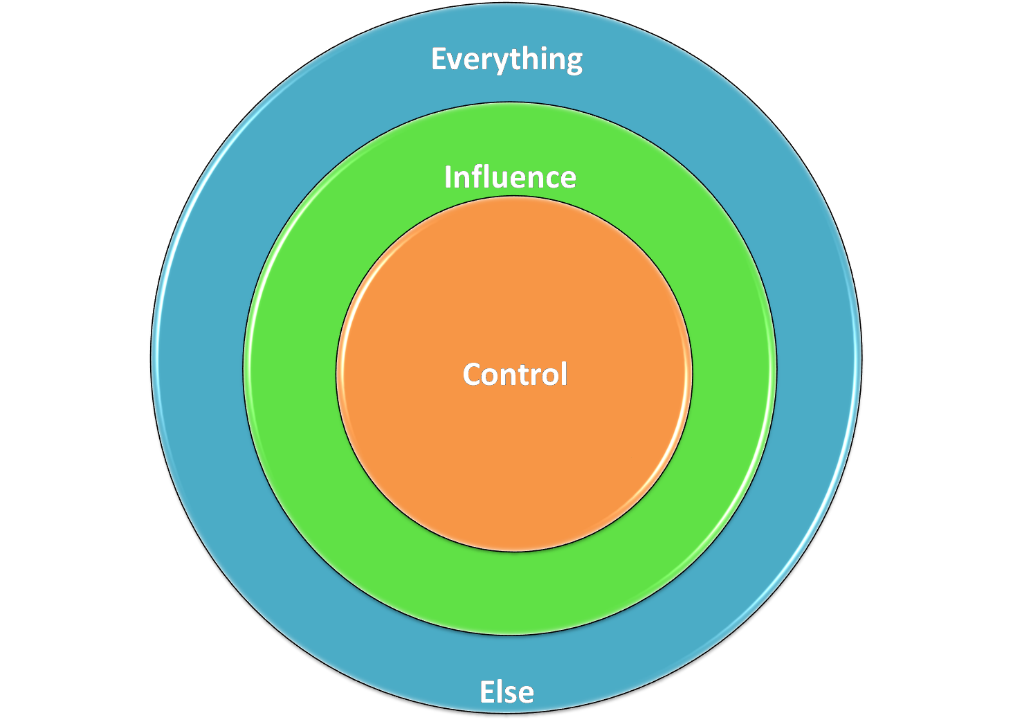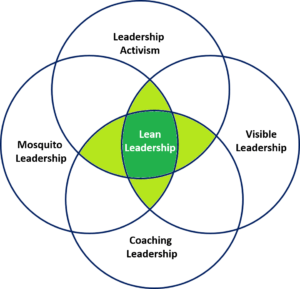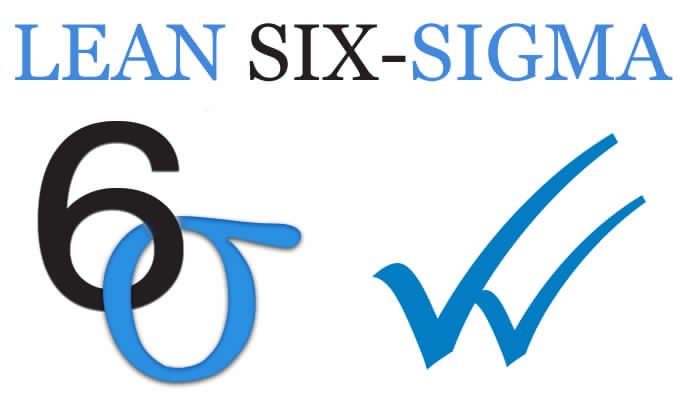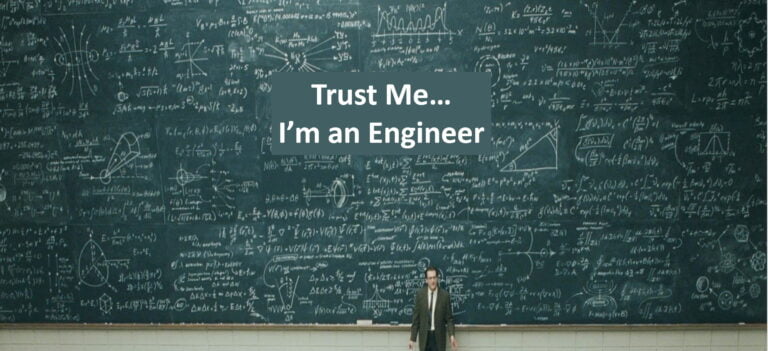Leading with Lean – Part 2
Steve Jobs once said:
“Be a Yardstick of Quality. Some people aren’t used to an environment where excellence is expected”
Therefore a Quality Mind-set will only pervade the organisation when the Leadership actively models the behaviour. Only by living the approach to Quality that they desire can Leaders truly drive the change to a Culture of Qu
This article is a continuation of Leading with Lean Part 1
3. Mosquito Leadership
The third form of Leadership in the repertoire of the Lean Leader is termed ‘Mosquito Leadership’. There is a certain familiarity with the concept of spreading ideas, news or opinions ‘virally’ and despite the fact that very few, if any, of us would like to catch a real virus, we are happy to catch many of the viral trends that are out there.

Extending the analogy, the Mosquito Leadership style is one where the Lean Leader spreads, virally, the change in mind-set by ‘infecting’ the organisation with their ideas and beliefs. Again, this is complementary to the other Leadership styles and so the Leadership Activism and Visibility play a significant part in this.
The philosophy behind this form of Leadership is that a Leader is not limited in influence and impact by job title, role description or hierarchal position. Instead, they identify the long-term impact that they wish to have on their organisation and develop a strategy to make it happen and the name given to this form of leadership was inspired by a traditional African proverb:
“If you think that you are too small to make a difference, try sleeping in a closed room with a Mosquito”
This is precisely why this form of Leadership is so important to being an effective Lean Leader, as without the willingness to go out and infect colleagues, the critical mass of change required for a Quality Mind-set and the pursuit of excellence will not be achieved.
To adopt the Mosquito Leadership style, certain beliefs must be held by the Lean Leader, which must be similar to the following:
- If I truly believe in the Vision, Mission and Values of the Organisation in which I operate, I must be a leader in the change required to realise our Goals
- However, I am not a lone soldier or a Maverick; I am an Agent for Change
- I know that ‘I’ deliver more when I focus on ‘We’
- I realise that I don’t have all the answers, in fact I have only a few, but I’ll find the people who collectively do have them
- Whilst my Legacy may be small in terms of Human History, it will be significant in the area for which I’m focussed
- It is only my Discipline and Focus that will be an equal to my Stamina
- I will only regret the mistakes that I made by not doing what I believed was right; all other mistakes I will simply learn and improve from
- I am the Culture of my Organisation, not the victim of it, and I will never blame it for my failure to deliver or let it prevent me from doing what must be done
- I do this because it is the right thing to do for the Organisation, not for Career advancement
The Lean Leader understands that their Sphere of Control is relatively small, even when they have risen to a quite senior level in their Organisation. However, they know that their success depends upon increasing their Sphere of Influence far beyond that which they would normally derive from the position that they hold and they strive energetically to increase its diameter every day.
There are multiple ways in which they can do this but, at the core, is a belief in what they want to achieve and a willingness to create the networks required to achieve it. In the Digital era in which we now live, this is much easier in terms of the media that can be used for this, although this has not diminished the personal courage required. Social media in particular have enabled the way by which the Lean Leader may increase their Sphere of Influence beyond those people that they meet in person and instead reach a global audience and, whilst external sites like LinkedIn are great tools for this, internal social media sites, such as those provided by Socialcast8, and the use of Webinars and Webcasts, are excellent ways to engage with the Organisation directly and to ensure that their voice is heard.

In case the metaphor of the Mosquito has engendered the idea that Mosquito Leadership creates a nuisance within the Organisation and someone to be eradicated, the Lean Leader is not someone who is fighting with the Organisation but, instead, someone who believes passionately in the Goals of the Business and is highly engaged in challenging the business to meet those Goals in a better way; more effectively and with greater success than they otherwise would.
They are certainly a disruptive influence, but in a very positive sense, as they consistently ask the difficult questions of the organisation and expect that the Status Quo be seen as something that will soon enter into history and, whilst the Mosquito often carries the Malaria virus, which Humans try to avoid, the organisation will gain greatly from the Virus that the Mosquito Leader will infect it with; one of Transformation.
The Mosquito Leadership style is not easy, as it requires that the person is prepared to step out of their ‘comfort zone’ and expand upon their ‘normal’ duties. They may find, in fact will often find, resistance from across the Organisation and will not ingratiate themselves with those who fear the change that they are advocating and are activist in bringing about.
The true Lean Leader, through the Mosquito Leadership style, will grow in their role as a thought leader and role model for change, delivering a Persistent Legacy, significant in their Organisation, which they, and everyone involved, can be extremely proud of.
4. Coaching Leadership
The final Leadership style required to ‘Lead with Lean’ is coaching leadership and is integral to the Lean Leadership approach.
To illustrate this, imagine how frustrating it must be as the Coach of a Football (Soccer) Team during the game; at worst they see their hard-worked game plan evaporate in front of their very eyes and, at best, they may win but have to watch as not everything goes to plan and they rely on their Players to make changes to the play as they respond to the actions of the opposition.
They can, of course, try to speak to their players whilst they are playing and it’s not unusual to observe coaches who arrive at the game cool and collected screaming incessantly at their players during the game. However, what is crucial is, that no matter how much they may try to influence their players with their cries from the sideline, they are not on the field of play and the game is played by the players themselves.
Whilst the Coach may have an overwhelming urge to enter the field of play, they have the advantage of being prohibited by the laws of the game and therefore have no choice but to coach from the sidelines. It is an advantage because, if they were allowed to enter the field of play, they may try to do the work for the players but would, inevitably, only make things worse and demotivate the team.
Relating this back to Business, far too often Leaders micro-manage their team members, entering the ‘field of play’ and trying to play the game for them. However, ironically, the problem solving is usually not done at the Gemba but in a Meeting room or remote office, using online dashboards, discussing perceptions of problems and opinions on solutions, which far too often do not include the insight or expertise of the people who actually do the work. Instead, a new mandate, set of Golden Rules or Procedure are sent to those who do the work, providing them with the ‘answer’ to a problem they didn’t know existed and which doesn’t address the root cause(s) of the issues that they face every day.
The result is the dichotomy of a system that has both over-intimate management, fire-fighting on a daily basis, combined with remote ‘problem solving’, which leads to demotivated and frustrated team members and, at best, average Operational Performance.
As Steve Jobs once said:
“It doesn’t make sense to hire smart people and then tell them what to do; we hire smart people so that they can tell us what to do”
Learning from the laws of the game of Football (and most Sports), there is the need to build a system where the Leaders of the organisation can work to set its vision, mission, values and its strategic objectives. Then, by working with their teams, they deploy the objectives into goals with clear deliverables that are cascaded throughout the organisation and, through the training and development of their staff, build the overall organisational capability that will support the creation of a high performance culture.
Crucially, they must allow their People to do the work and problem solve, without ‘telling’ them what to do. This is not to say that Leaders should be banned from going to the Gemba, quite the contrary, we want them there more than they are on average, as highlighted by both the visible and activist leadership styles, but what we need is for them to coach, not try to play the game for their Team.
This requires a different skill-set and mind-set than most leaders have developed throughout their careers, changing their role from being the most experienced and expert of the team (or at least thinking that), able to tell everyone how to fix the problems, to a coaching role, asking the right questions to enable the team to solve their problems in a structural way. Most importantly, they need to allow their people to make mistakes and learn from them, doing things differently than they would personally prefer.
Most importantly, they need to allow their people to make mistakes and learn from them, doing things differently than they would personally prefer.
This is a key component of Lean Leadership, as it is the only way that an individual can have the scale of impact that is necessary to drive high business performance; getting results through the enablement of others’ skills and their engagement in the work, as opposed to by telling them what to do.
This takes a leap of faith for the individual Leader, facing a perceived loss of control and a fear that performance will spiral out of control without their explicit intervention and direction. It is true that, if control has been the norm in the organisation or group then a complete change overnight is not advisable, as the team will not have the requisite organisational capability. Nevertheless, the change in behaviour and ways-of-working has to begin and make significant progress whilst we build the capability and trust of the team.
Moving to a Coaching Leadership style will not be easy. However, it is essential to achieve long-term sustainable success for the organisation.
Conclusion

If we are to deliver a truly excellent organisation, with a Quality Mind-set, we need to lead in a way that enables it. The proposition of this article was that Lean Leadership is the best way to achieve this, provided that it is practice authentically, consistently and in the long-term, regardless of business pressures.
The 4 Leadership styles required to achieve Lean Leadership are complementary and, whilst each on their own are already positive, their cumulative impact is much larger than the sum of the individual parts.
In fact, if one or more of them is overlooked or omitted, there will be a deleterious effect on the overall efficacy of the Leadership and so the Leader must ensure that they focus effectively on building their competence in all 4 styles. In fact, the most positive approach is where Leadership teams are able to agree that they will all live and breathe Lean Leadership and are able to support and challenge each other along their journey and this is the approach taken in Royal Philips, where the Lean Excellence Model9 ensures a unified and collective method for the deployment of Lean Thinking.
Bringing together the Leadership Styles required to achieve Lean Leadership in a Venn Diagram, it is clear that it can only be achieved when all 4 styles are running in harmony.
If one, or more, is missing, there will be consequences for the impact of the Leadership Style within the organisation:
- Without Leadership Activism the essential element of Role Modelling and leading by example will be missed
- Without Visible Leadership the employees will not see what the Leader is doing and they will become detached from the teams
- Without Mosquito Leadership the Leader’s impact on the organisation will be limited to their span of control, which will usually, even in the case of Senior Leaders, be quite small
- Without Coaching Leadership, the Leadership will appear directive and the results will be unsustainable
Where Lean Leadership is practiced, learnt and applied, employee engagement will bloom and the organisation’s performance thrive, bringing benefits for everyone; Customer, Employee, Leader and Shareholder.

Philip Holt
An experienced Change Leader with a track record of delivering Operational Excellence within Market Leading Businesses. With a people focused drive for results, develops strong teams to ensure that the Business Strategy is successfully delivered. Highly experienced working globally, combining adaptation to cultural differences with a maintenance of fidelity to the blueprint.
Notes:
- Gallup 2013 Employee Engagement Survey; com
- Harvard Business Review 2013; The Impact of Employee Engagement on Performance
- The Lean Turnaround by Art Byrne, ISBN-10: 0071800670
- Virginia Mason named one of America’s 100 Best Hospitals by Healthgrades for the third year: Link
- Taaichi Ohno’s workplace management: Link
- Kamishibai is a form of layered audit, whereby the Leader goes to the place of work (Gemba) and asks coaching questions to help one of their team members to identify waste in the process and implement an improvement to the standard (Kaizen)
- A Kanban Development board is a tool for tracking the progress of development of a Product or Service through its breakdown into ‘work packages’, with owners and timescales, which progress through the stages against a timeline and swiftly visualise where delays are occurring and support is required. They are typically found in Development groups applying a form of Lean Thinking called Agile
- Socialcast (Link) is an Enterprise Social Media platform that allows internal collaboration with the option of selective external access. It is customisable for the organisation to adapt it to their particular needs. The Author has no commercial or financial interest in this company and offers only a personal user recommendation without expert opinion.
- The Philips Lean Excellence Model is a phased model for the deployment of Lean Thinking into Royal Philips. It is a standardised model that covers the whole organisation across the Idea-to-Market, Market-to-Order and Order-to-Cash Value Streams and the enabling functions.




